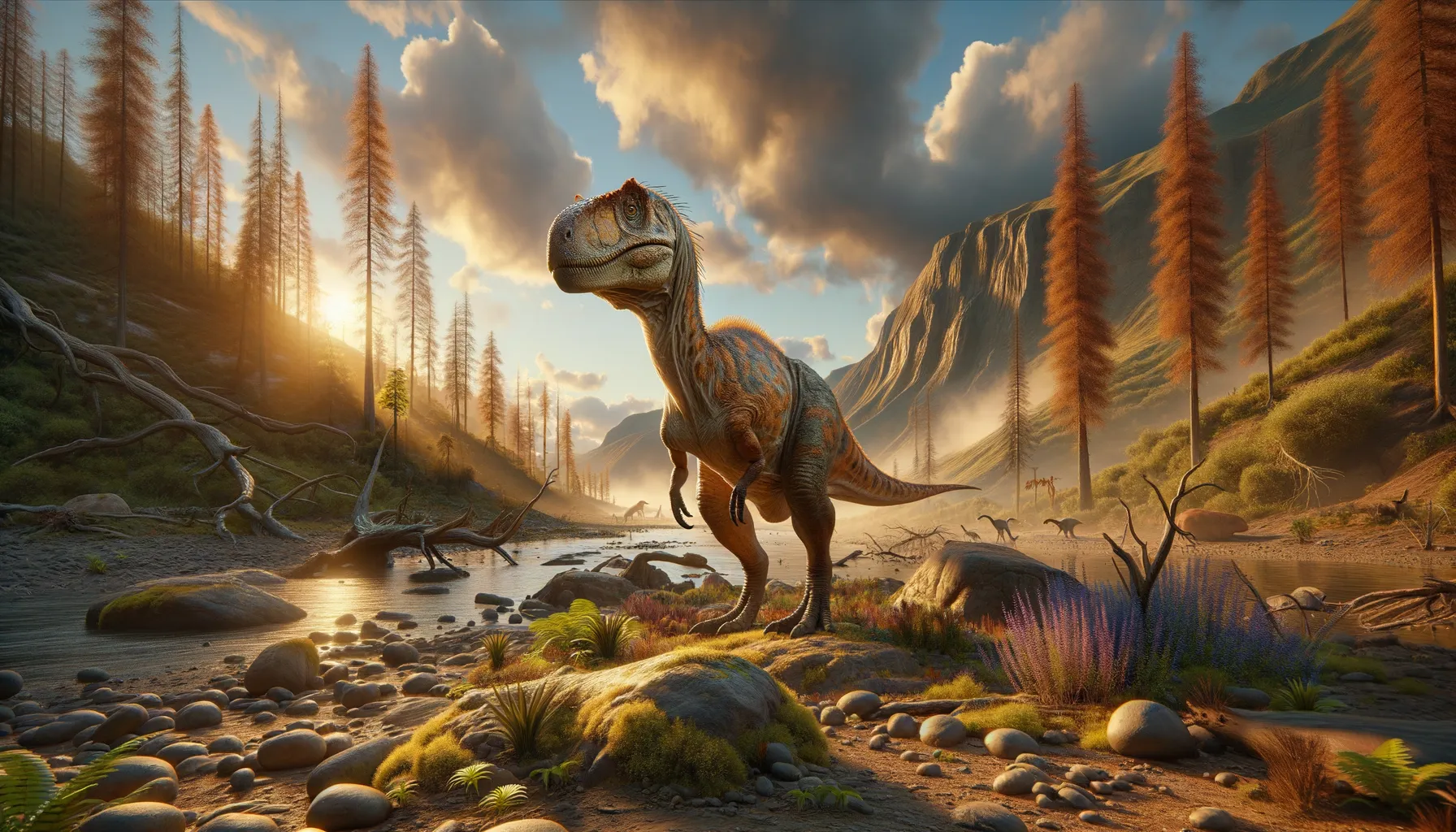
Gideonmantellia
Speedy survivor of the Cretaceous challenges.
Period
Cretaceous
Length
Approximately 3 to 4 meters long.
Height
Possibly stood about 1 meter tall at the hip.
Weight
Estimated to weigh around 20 to 30 kg.
Gideonmantellia is a small, bipedal dinosaur that lived during the Early Cretaceous period. Known for its lightweight build, it likely relied on speed for survival, escaping predators and perhaps hunting small prey. Named after the paleontologist Gideon Mantell, this dinosaur adds to our understanding of the diversity and adaptation of early ornithopods. Discoveries of its fossils have been essential to piecing together the ecosystem of its time.
Diet
Gideonmantellia was primarily herbivorous, feeding on leaves, soft plants, and possibly fruits. Its teeth suggest it was well-adapted to grinding plant matter.
Hunting
Being a herbivore, Gideonmantellia did not hunt other animals. However, it might have foraged for food in groups for protection against predators.
Environmental challenges
During the Cretaceous period, the environment was changing with high volcanic activity and fluctuating sea levels. Such changes could have affected the availability of food resources. Adaptations in diet and behavior were crucial for its survival. The presence of large predators also posed constant threats requiring vigilance and speed for safety.
Speed
Gideonmantellia was likely a moderately fast runner.
Lifespan
Specific lifespan details are unclear but similar dinosaurs lived around 20 years.
First discovery
First discovered in Spain, with fossils dating back to 1800s.
Fun Facts
- Gideonmantellia is named after Gideon Mantell, a pioneer in paleontology who discovered the first Iguanodon fossils.
- These dinosaurs lived during the Early Cretaceous period, roughly around 130 million years ago.
- Gideonmantellia fossils were first found in Spain, offering insights into European dinosaur fauna of that time.
- It was a small dinosaur, estimated to be about 2 meters long, making it a relatively petite herbivore.
- Gideonmantellia is believed to have been a fast runner, thanks to its long legs, which helped it escape predators.
- The dinosaur is classified as an ornithopod, a group known for being bipedal plant-eaters.
- Gideonmantellia's discovery has helped scientists better understand the diversity of ornithopods in the Early Cretaceous.
Growth and Development
Gideonmantellia likely hatched from eggs, going through a significant growth period before reaching maturity. Young dinosaurs would need to quickly develop speed and agility to escape predators. Growth rates might have been influenced by environmental factors such as food availability and climate.
Habitat
This dinosaur inhabited what is now present-day Europe, in areas that were likely forested or had abundant vegetation. Its environment would have been rich in plant life, providing ample food sources. Living in such a region required adaptability to a variety of terrains.
Interaction with other species
As an herbivore, Gideonmantellia would have shared its habitat with other plant-eating dinosaurs, competing for food resources. It also coexisted with various predatory dinosaurs that it had to evade. Social interactions may have occurred within its species to aid in foraging and protection.
Natural lifespan
Gideonmantellia had a natural lifespan similar to small herbivorous dinosaurs, likely around 20 years.
Reproduction
Gideonmantellia reproduced by laying eggs, which were probably buried or hidden to protect from predators. Parenting behaviors are not well-documented, but like many dinosaurs, it might have guarded its nest. Hatchlings required rapid growth to survive early threats from predators.
Social behaviour
While concrete evidence is limited, Gideonmantellia may have lived in groups or at least foraged together for protection. Group living could have provided advantages such as cooperative foraging and heightened predator detection. Social interactions were important for the survival of juveniles and the safety of the herd.
Fossil locations
Fossils of Gideonmantellia have been primarily found in Spain, contributing valuable insight into Early Cretaceous ecosystems. These fossils have helped paleontologists understand the diversity of European dinosaurs during this period. Discoveries in Spain remain crucial to studying these lesser-known dinosaurs.
